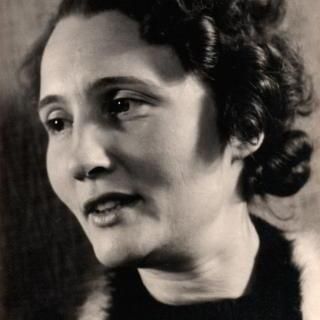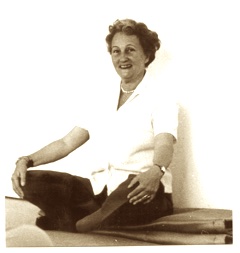History
Eutony is a practice based on sensory awareness. It was developed by Gerda Alexander (1908-1994)
Gerda Alexander was born in Wuppertal in 1908 and studied rhythmics and movement education with Otto Blensdorf (student of Emile Emile Jaques Dalcroze).
Due to health problems caused by rheumatism, Gerda Alexander began to research her body and its laws. Her observations helped her to develop economical and energy-saving ways of moving. At the same time, she found ways to promote the organism’s self-regulating and healing powers. Tension regulation became the basis and goal of her work. Her decades of research, experience and observation gave rise to a way of working that is based on certain methodological principles. The main principles of her practice are Touch, contact and power transmission.
1940
Gerda Alexander opened the first Training Center for Eutony in Copenhagen in 1940. Until 1987, she taught professionals from a wide range of backgrounds in the pedagogy of Eutonie, Eutonie therapy as well as Eutonie movement design.
1957
As of 1957 she called her working method “Eutony”.
Eutonie
Influenced by reform pedagogy, Gerda Alexander was always keen for her trainees to discover their own forms of movement and develop their creativity. Through the practice of Eutony, they were to find support in their endeavours for personal development and personal responsibility.
"Eutony is a western way of experiencing the physical and spiritual unity of the human being. Not through immersion, but through the expansion of consciousness, creative powers are unfolded and at the same time the ability to socialise is activated - a path of development that reveals the quality of the personality and enables it to adapt to the life of the community without losing its individuality. The term eutony - from the Greek eu = well, right, harmonious, and tonus = tension - was coined for this training in 1957 because the unity of our physical-spiritual reality can be experienced and tested through deepened attention and conscious influence on the state of tension of our entire muscular and nervous system ..."


